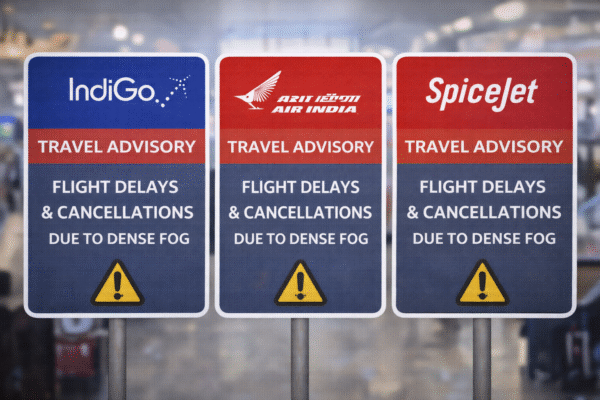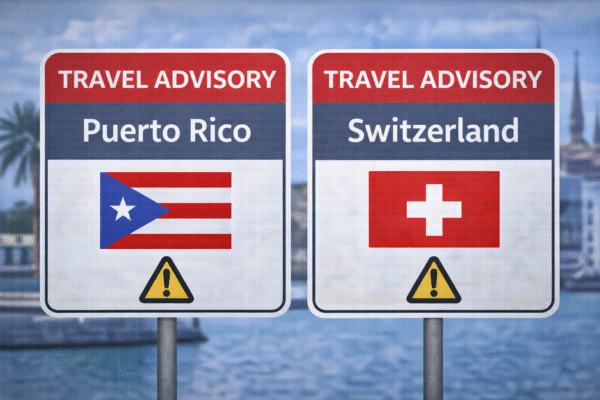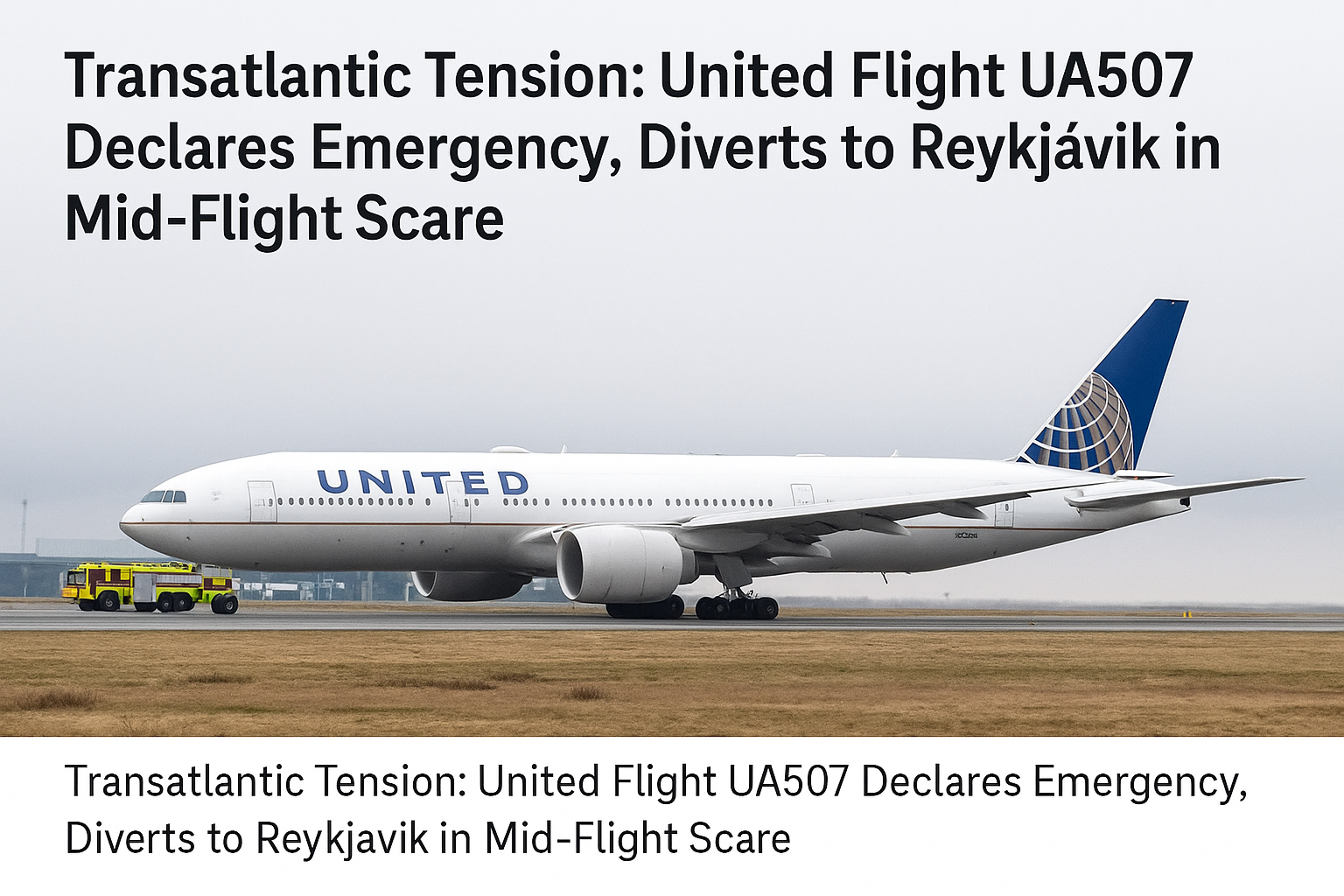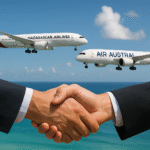A United Airlines transatlantic flight turned into a dramatic episode on June 21, 2025, when Flight UA507 enroute from San Francisco (SFO) to Rome (FCO) declared a mid-air emergency and was forced to divert to Reykjavík, Iceland. The emergency alert—broadcast via squawk code 7700—triggered immediate concern across aviation networks, prompting rapid-response deployment at Keflavík International Airport (KEF), Iceland’s primary international gateway.
Emergency Over Open Ocean
Flight UA507, a Boeing 777-200ER with tail number N76010, departed from San Francisco at 17:03 local time. The aircraft was scheduled for an 11-hour 45-minute journey, with over 200 passengers aboard. Midway over the vast, remote expanse of the North Atlantic Ocean, the flight suddenly issued a distress signal.
While exact causes remain officially undisclosed, the pilot followed established emergency diversion procedures, rerouting the aircraft toward Iceland, one of the few viable diversion points in the region. The flight landed safely at 08:01 UTC on June 22 on Runway 01 at KEF, where emergency responders were ready.
All Passengers Safe, But Turbulence of a Different Kind
No injuries were reported, and passengers disembarked under the guidance of airport security and United’s ground handling teams. However, with the exact reason behind the emergency still undisclosed by United Airlines, speculation continues to swirl—from possible mechanical failure to fears of geopolitical influence.
In recent weeks, global travel has been shadowed by tensions following the escalating U.S.-Iran standoff. Though no evidence directly links the flight diversion to such events, the timing has led to heightened speculation and scrutiny.
Ripple Effects on Transatlantic Travel
The diverted aircraft disrupted not only the journey of those aboard but also airline operations across multiple hubs. United Airlines is working to rebook passengers either through connecting flights from Reykjavík or via reassignments from other European hubs, given the limited long-haul connectivity from KEF.
This disruption also reverberates through the carrier’s transatlantic fleet scheduling, especially during a peak summer travel window. Delays in aircraft rotation, crew scheduling, and maintenance checks could affect other long-haul services between North America and Europe.
Spotlight on Aircraft Age and Safety Protocols
The Boeing 777-200ER involved in the incident, built in 1999, represents an older but still active part of United’s international fleet. While such aircraft undergo regular maintenance and safety checks in line with FAA and international aviation standards, emergency landings like this one often renew public discussions about the risks of aging fleets operating on ultra-long-haul routes.
Air safety experts suggest that the FAA and European Aviation Safety Agency (EASA) may jointly investigate the flight once technical data is available. Particular attention will likely be paid to real-time system monitoring, crew alert systems, and the potential limitations of diverting over oceanic airspace.
Reykjavík Proves Strategic Role in Global Aviation
Keflavík International Airport once again proved its importance as a critical emergency alternative for transatlantic flights. The facility is strategically located for mid-Atlantic diversions, especially for aircraft with emergencies far from North America or Europe.
Local emergency teams swiftly deployed fire engines and medical support upon the aircraft’s landing. United Airlines’ station staff arranged for passenger care including food, accommodation, and onward travel coordination.
Passenger Reactions and Safety Preparedness
Passengers described a tense period aboard the aircraft as the emergency announcement was made, though the crew reportedly remained calm and professional. The sudden descent and change in flight path sparked concern among travelers, many of whom were unaware of the exact nature of the issue until landing.
Aviation analysts suggest that airlines should refine in-flight communication strategies to manage passenger fear during emergencies, particularly in cases where no immediate threat is visible but operational priorities dictate diversion.
Tourism Industry Implications
As global tourism rebounds from the COVID-19 pandemic, incidents like these remind travelers and industry stakeholders of the fragile balance between safety and demand. Airlines are ramping up operations to meet summer holiday surges, but operational stress, aging fleets, and geopolitical uncertainty challenge seamless service.
The tourism industry now faces renewed calls for transparency, updated emergency training, and traveler assurance policies that go beyond pricing and convenience.
Looking Ahead: Investigation and Recovery
An official report from United Airlines is expected following initial internal reviews. Aviation authorities in the U.S., Iceland, and Europe will likely collaborate to determine the root cause of the emergency.
Until then, the grounded Boeing 777 remains under inspection at KEF. Passengers are being rerouted via alternative United or Star Alliance carriers to Rome and beyond.
For now, United’s swift crew response and Iceland’s readiness averted a more serious outcome—but the global travel community remains on edge, watching closely for answers.
For more travel news like this, keep reading Global Travel Wire
















